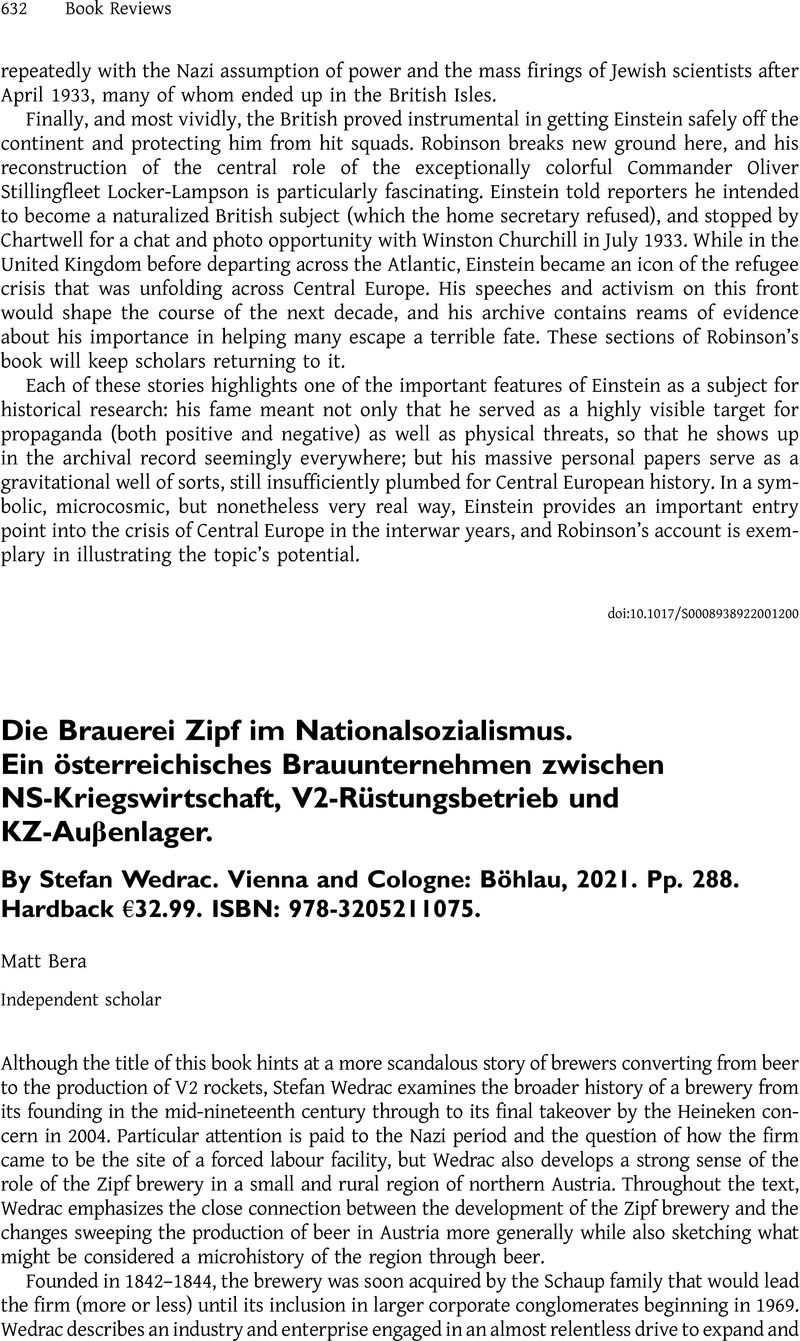No CrossRef data available.
Article contents
Die Brauerei Zipf im Nationalsozialismus. Ein österreichisches Brauunternehmen zwischen NS-Kriegswirtschaft, V2-Rüstungsbetrieb und KZ-Auβenlager. By Stefan Wedrac. Vienna and Cologne: Böhlau, 2021. Pp. 288. Hardback €32.99. ISBN: 978-3205211075.
Review products
Die Brauerei Zipf im Nationalsozialismus. Ein österreichisches Brauunternehmen zwischen NS-Kriegswirtschaft, V2-Rüstungsbetrieb und KZ-Auβenlager. By Stefan Wedrac. Vienna and Cologne: Böhlau, 2021. Pp. 288. Hardback €32.99. ISBN: 978-3205211075.
Published online by Cambridge University Press: 05 January 2023
Abstract
An abstract is not available for this content so a preview has been provided. Please use the Get access link above for information on how to access this content.

- Type
- Book Review
- Information
- Copyright
- Copyright © The Author(s), 2022. Published by Cambridge University Press on behalf of Central European History Society of the American Historical Association


